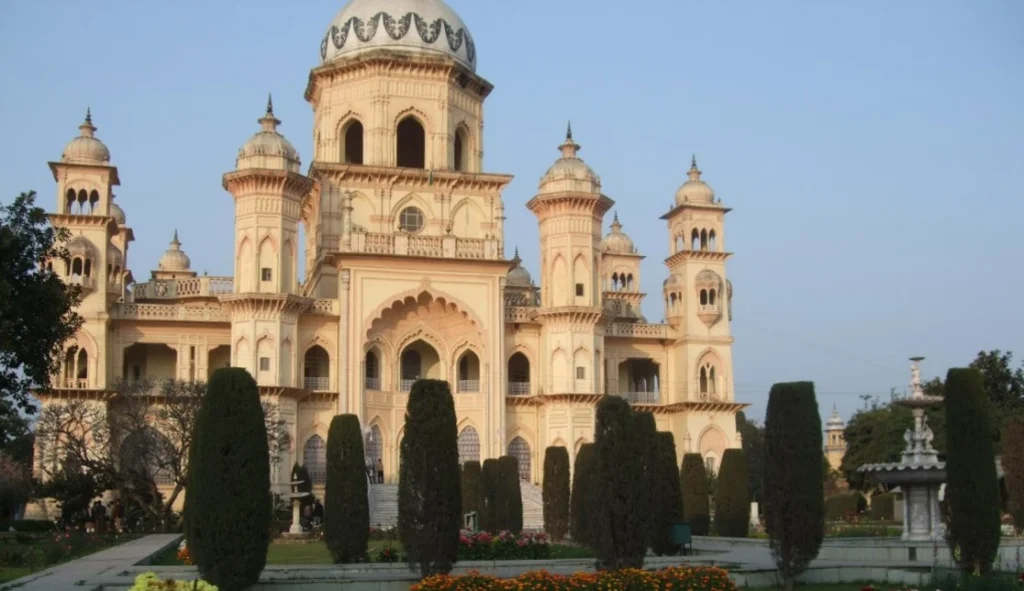Discover Rampur, Uttar Pradesh – a land of Nawabi heritage, rich culture, and musical legacy. Explore its historical sites, royal traditions, and artistry!

Explore Rampur Where History Royalty & Music Flourish
Nestled in the northern part of India, Rampurr District is a captivating blend of history, culture, and natural beauty. With a rich heritage dating back centuries, this district holds a unique place in the heart of Uttar Pradesh. Spread over an area of approximately 2,367 square kilometers, Rampur District is known for its historical significance, architectural marvels, and diverse population.
The district’s history can be traced back to the 18th century when it was founded by Nawab Faizullah Khan. The Nawabs of Rampurr played a significant role in shaping the culture and architecture of the region. Their influence is evident in the stunning architecture that adorns the district, including intricately designed mosques, palaces, and mausoleums. The Rampur Raza Library, established by Nawab Hamid Ali Khan, is a treasure trove of rare manuscripts, books, and artifacts that reflects the intellectual pursuits of the era.
Rampur’s cultural tapestry is a vibrant amalgamation of various traditions and communities. The district is home to a diverse population, including Hindus, Muslims, and Sikhs, each contributing to the rich cultural mosaic. Festivals like Eid, Diwali, and Holi are celebrated with fervor, showcasing the unity amidst diversity. The traditional Rampuri cuisine is a treat for food enthusiasts, offering dishes that blend local flavors with Mughal influences.
The district’s natural beauty is another facet that enchants visitors. Situated along the banks of the River Kosi, Rampur boasts of lush green landscapes, fertile agricultural lands, and picturesque villages. The serene countryside offers a welcome respite from the hustle and bustle of city life. The Tanda Wildlife Sanctuary, home to diverse flora and fauna, is a testament to the district’s commitment to preserving its natural resources.
Rampur’s economy is primarily agrarian, with agriculture being the backbone of the region. The fertile plains of the district yield crops such as wheat, sugarcane, and rice, contributing significantly to the state’s agricultural output. In recent years, efforts have been made to diversify the economy by promoting industries and small-scale businesses, thereby creating employment opportunities for the local population.
Education and healthcare have also witnessed progress in Rampur District. The establishment of schools and healthcare facilities has improved access to essential services for residents. Additionally, the district’s proximity to major urban centers like Moradabad and Bareilly has facilitated better connectivity and access to higher education and medical facilities.
Famous Places in Rampur District
Rampur District boasts a plethora of famous places that showcase its rich history and cultural diversity. From architectural marvels to natural wonders, here are some of the district’s notable attractions:
Rampur Raza Library: A true treasure trove for bibliophiles, this library houses an impressive collection of rare manuscripts, books, and artifacts. Established by Nawab Hamid Ali Khan, the library reflects the intellectual pursuits of the era.
Rampur Fort: This historic fort stands as a testament to Rampur’s royal past. Built by Nawab Faizullah Khan, it features impressive architecture and offers a glimpse into the district’s regal history.
Jama Masjid: An architectural masterpiece, the Jama Masjid in Rampur is known for its intricate design and grandeur. It is a significant religious and cultural landmark in the district.
Shahbad Gate: This ancient gateway is a fine example of Rampur’s architectural heritage. It serves as a portal to the district’s historical legacy and offers insights into its past glory.
Nawab Ki Sarai: A splendid example of Mughal architecture, this sarai (inn) was built by Nawab Faizullah Khan. It showcases the fusion of Mughal and local design elements.
Tanda Wildlife Sanctuary: Nature enthusiasts will find solace in this sanctuary, which is home to diverse flora and fauna. It’s a perfect spot for birdwatching and wildlife photography.
Dhakia Mahal: A stunning palace built during the reign of Nawab Yousuf Ali Khan, Dhakia Mahal is a blend of Mughal and British architectural styles. Its grandeur and charm are sure to captivate visitors.
Kalan Mosque: Known for its impressive domes and minarets, the Kalan Mosque is an architectural gem that stands as a symbol of Rampur’s religious and historical significance.
Bareilly Gate: This monumental gate, constructed during the reign of Nawab Kalb Ali Khan, is a prime example of Rampur’s architectural heritage and marks the entrance to the city.
Rampur Planetarium: A modern addition to Rampur’s attractions, the planetarium offers visitors an opportunity to explore the wonders of the universe through educational shows and interactive exhibits.
These famous places in Rampur District collectively paint a vivid picture of its past, present, and cultural heritage. Whether you’re a history buff, an architecture enthusiast, or a nature lover, Rampur has something captivating to offer at every turn.
Read More :-
